- 1. Key Features of the Neoclassical Style in Interior Design
- 2. Color Choices in Neoclassical Interior Design
- 3. Materials and Decor in Neoclassical Style
- 4. Illumination and Accent Lighting
- 5. Furniture in Neoclassical Style
- 6. Decor and Accessories
- 7. Neoclassical Style in Interior – Photo Gallery
Timeless elegance of classic interiors never goes out of style, but even they gradually acquire new details and interpretations. One of such modern interpretations is neoclassical style. It combines all the essential classical features, but is much better adapted to the realities of modern homes and apartments. Intrigued? We’ll tell you all about this style and its unique features!
Key Features of the Neoclassical Style in Interior Design
Neoclassical style is a modern interpretation of classic interiors, so its distinctive features have been largely preserved without significant changes. Although it is visually simpler, it is still a rich, luxurious, and respectable style with expensive materials and decor.
Neoclassical style requires space, as the entire composition depends on it. It also leans towards symmetry and the presence of prominent focal points around which the interior is built. For example, a fireplace in the living room, a luxurious dining table in the kitchen, or a canopy bed in the bedroom.
The foundation of the design is clean proportions, crisp lines, and simple geometry. Just like in classic interiors, minimalistic shapes become the background for decorative embellishments.
Color Choices in Neoclassical Interior Design
The color palette of neoclassical style is similar to that of classic style: it is wide and varied, but common trends are clearly visible. Background colors can be both dark and light, but they are more restrained. These are white, beige, gray, shades of brown, sand, and their combinations.
Bright and saturated tones are used for accents and decor: furniture, textiles, lighting fixtures, and paintings. These are mainly complex and deep shades such as burgundy, emerald, sapphire, mustard, and olive. It is not necessary to use too many shades at once: one or two accents are enough.
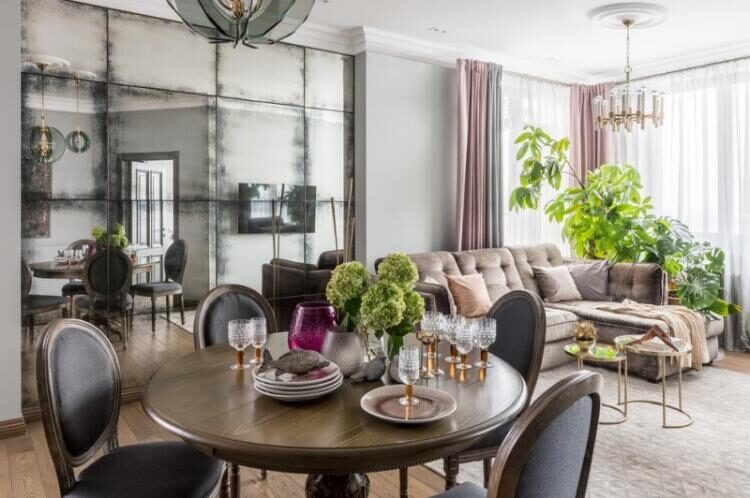
If classic style leans towards warm pastel color combinations, then in neoclassical interiors, this is not necessarily the case. Here, a cool color palette is common, and even dark and contrasting duets can be used. The most important thing is to consider the size of the room, so that the interior does not look too overloaded and gloomy.
Boldly combine all natural shades: silver, cream, gold, ochre, blue, and chocolate. They are good in any combinations and always look elegant and expensive.
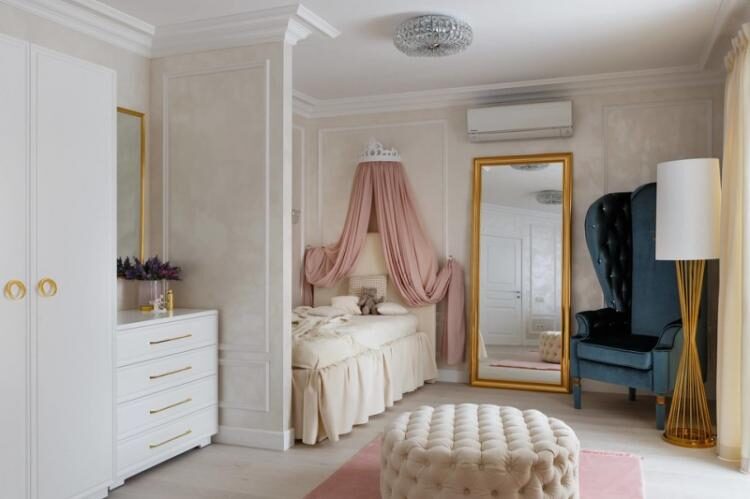
Materials and Decor in Neoclassical Style
Neoclassical style in interior design is more soft and flexible in terms of materials compared to the demanding classical styles. Here, simple wood varieties and decorative stones can be used, and natural materials can even be combined with artificial ones.
Floor Finishing
A traditional flooring option is hardwood parquet or floorboards that come straight from classic design. However, you can replace them with a more practical and low-maintenance laminate that imitates artistic finishes. For functional spaces, stone, ceramic tiles, and porcelain tiles are suitable options.
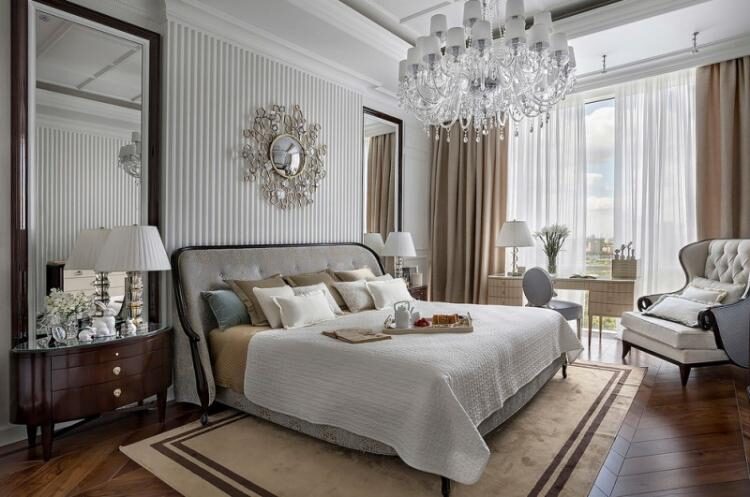
Ceiling Design
The perfect ceilings in neoclassical style are smooth and white, achieved through regular paint or a single-level stretch ceiling. Choose a matte or satin finish, although gloss can also work well in a small room. For added elegance, use neat plaster moldings around the edges and a decorative medallion around the light fixture.
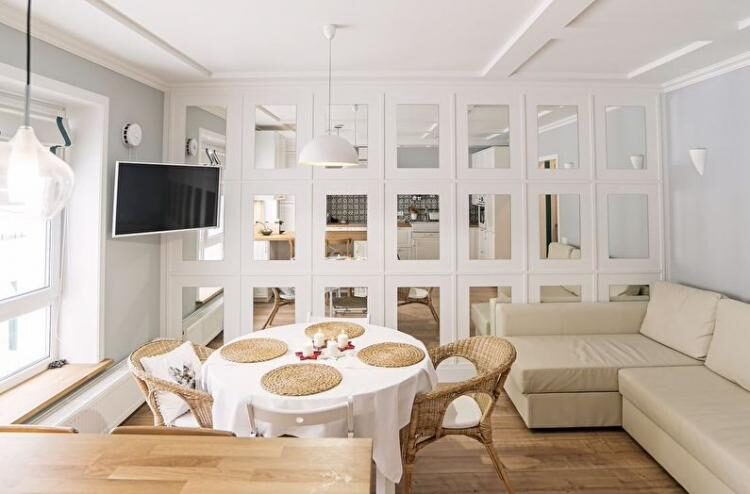
Wall Finishing
In neoclassical interiors, walls are decorated with moldings and panels with simple forms and lines. An alternative option is neutral-toned wallpaper or wallpaper with matching designs, either solid-colored or with botanical motifs.

Curtains and Textiles
Natural fabrics are primarily used in neoclassical interiors. However, instead of jacquard and tapestry, consider heavy cotton, linen, or blended fabrics. They are not only cheaper but also more practical and easier to maintain.
Decorative compositions of curtains in neoclassical style are simpler and more concise than in the classic style. Lambrequins are appropriate, but simple rectangular or rounded shapes over thick floor-length curtains work just as well.
If you want to lay down a carpet, don’t choose a full-floor covering. Clear contrasting geometric patterns make the space more modern, while classic blurred floral patterns suit those who prefer more traditional solutions.
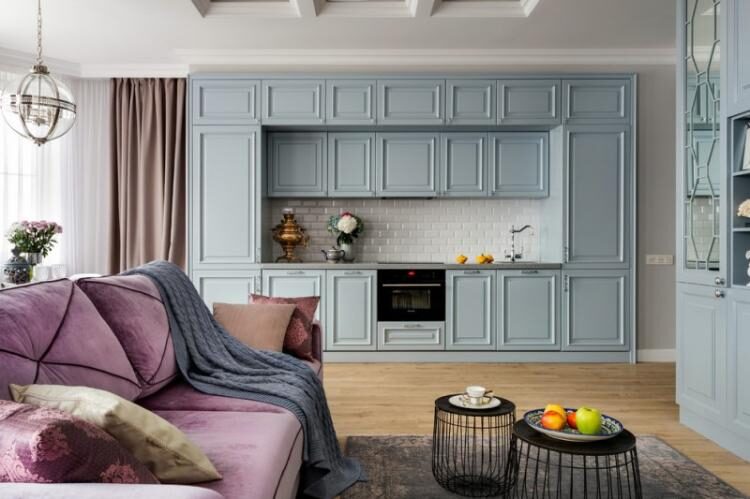
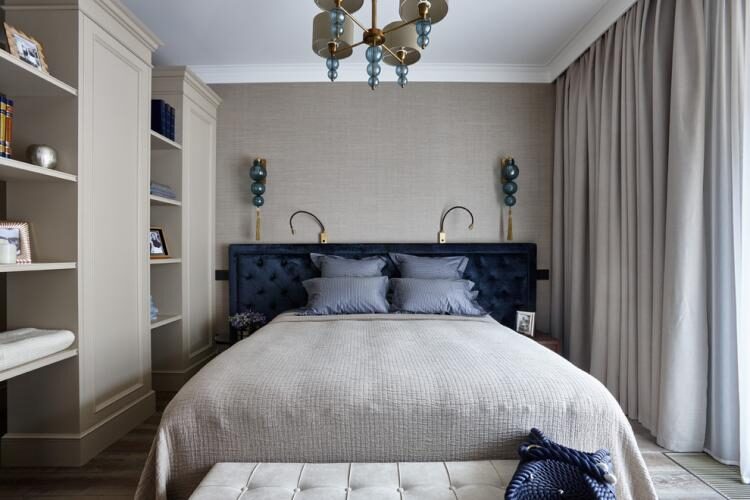
Illumination and Accent Lighting
A neoclassical interior must be bright, so plan for multi-level lighting. You’ll need a chandelier, floor lamps, decorative wall sconces, and table lamps with lampshades. All light fixtures must be arranged symmetrically: on both sides of the sofa, on bedside tables, on both sides of the mirror.
Choose decorative elements to adorn the chandeliers: pendants, crystal strands, wrought details. These multi-tiered structures resemble a cake but instantly create a festive atmosphere in the room. A large luxurious chandelier in the bedroom, living room, or dining room becomes the center of the composition.
Unlike classic interiors, where all modern details stand out against the background, neoclassical interiors can feature decorative accent lighting. Install LED strips in niches, decorate shelves and bookcases with elegant garlands – all of these will add an unforgettable individual character.
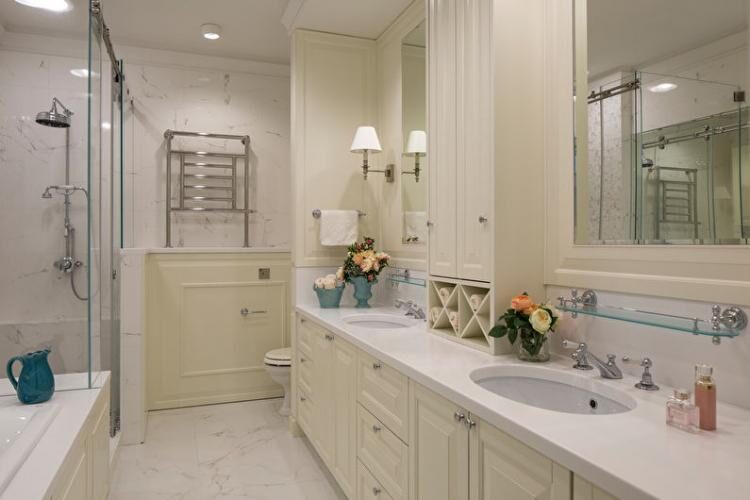
Furniture in Neoclassical Style
When designing neoclassical interiors, much inspiration is drawn from modern minimalist trends. Use a minimum amount of furniture and only the essentials: this will make the decor visually lighter. Light or dark wood is often used, sometimes even painted wood.
Heavy and massive furniture is rarely used, and elegant raised supports or legs help lighten armchairs, beds, and dressers. Toilet and coffee tables, benches, ottomans, and other classic elements look great.
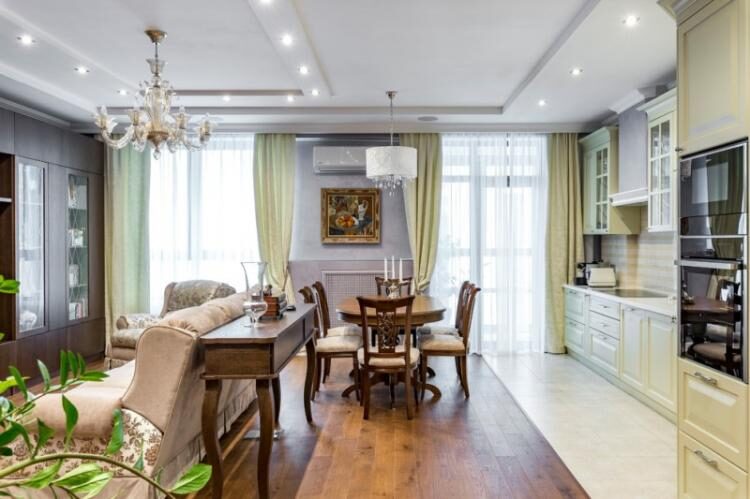
Decor and Accessories
The decor in neoclassical style is still luxurious and rich, but more subdued than in classic interiors. Moldings, columns, molding, thresholds, and wall panels are more concise and modern.
The use of more practical everyday textiles is allowed instead of velvet or brocade. Embroidery, tassels, canopies, lambrequins, and tiebacks remain in their places but are also simplified. Don’t forget to decorate windows, doors, and arches with plaster elements.
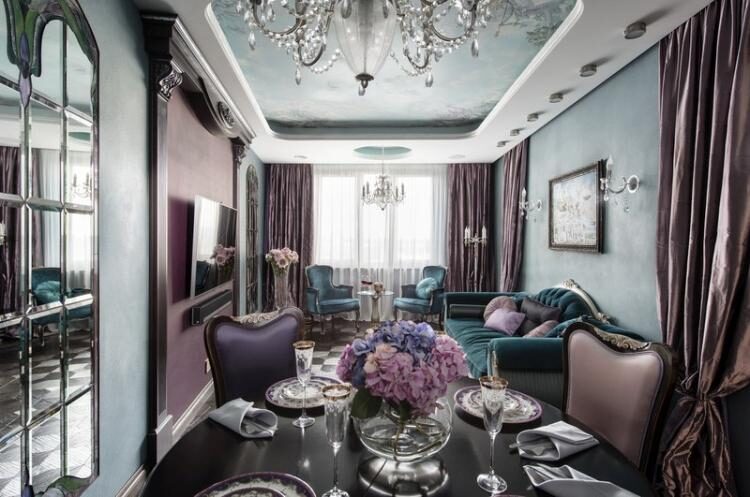
A stylish accessory in neoclassical interiors is a real or artificial fireplace. Decorate it discreetly, but highlight the entire area with a carved wooden frame or a large mirror. Instead of numerous scattered elements, choose one key piece: one large painting instead of a scatter of small ones.
Mirrored surfaces are common in neoclassical interiors: gloss, glass, and mirrors themselves. Such inserts visually enlarge and expand the room, making it brighter and more festive.
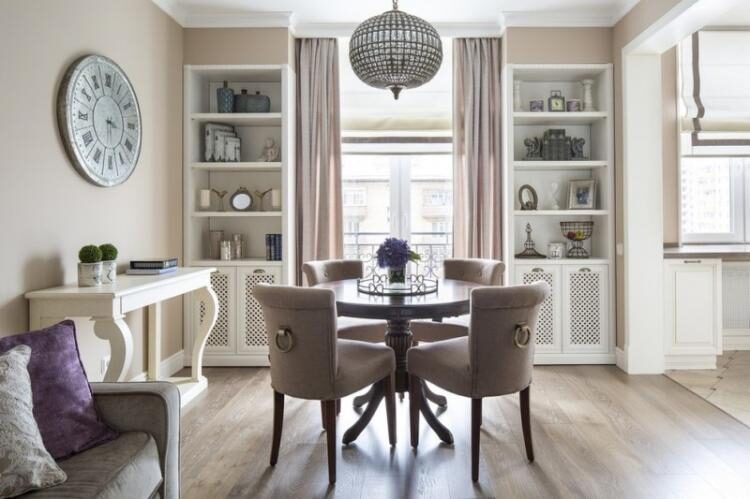
Neoclassical Style in Interior – Photo Gallery
A neoclassical living room is all about luxury and comfort in an elegant and aristocratic interpretation. This room is created for entertaining guests and spending pleasant, peaceful family evenings.
The living room is the heart of the home, and that’s why its interior should be planned particularly carefully. Neoclassical style manages to delicately balance between simplicity and luxury. The room is usually decorated with elegant furniture, ornate moldings, and refined textiles, with neutral tones and metallic accents creating an overall sophisticated atmosphere. Mirrors, chandeliers, and large paintings are common decor elements. Overall, a neoclassical living room exudes a sense of refined elegance and timeless charm.

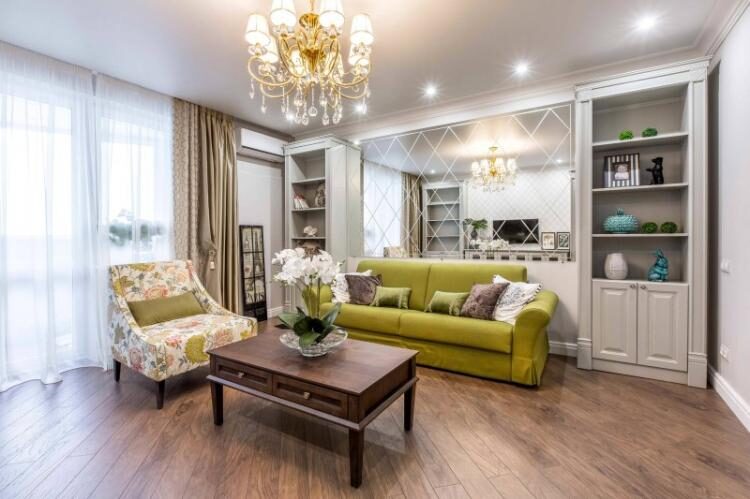

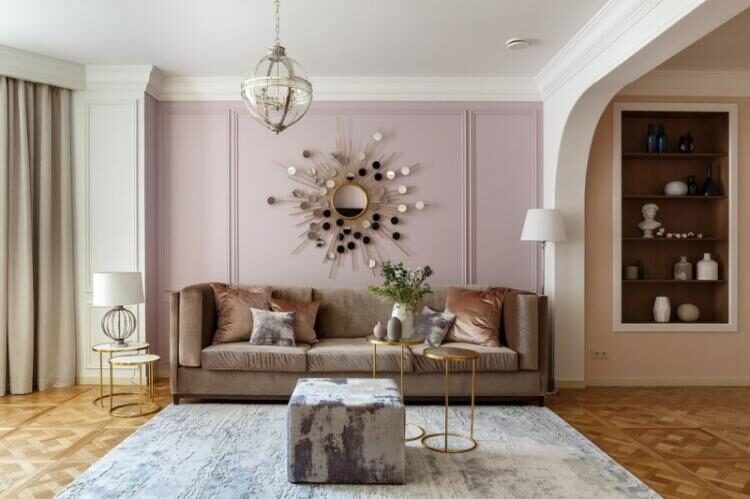
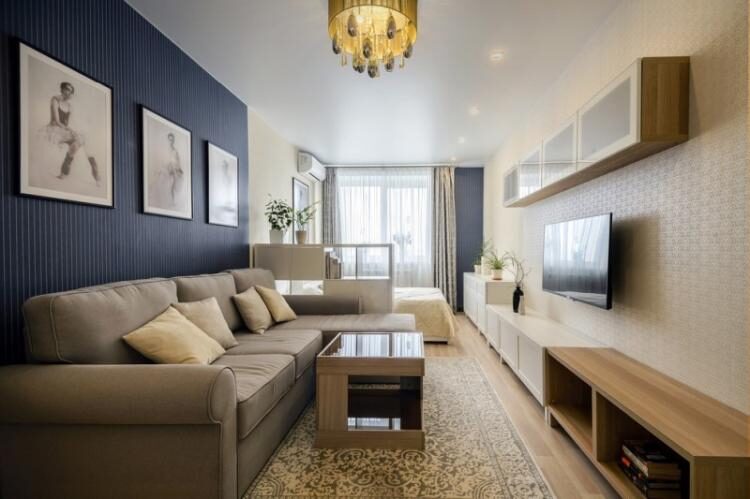

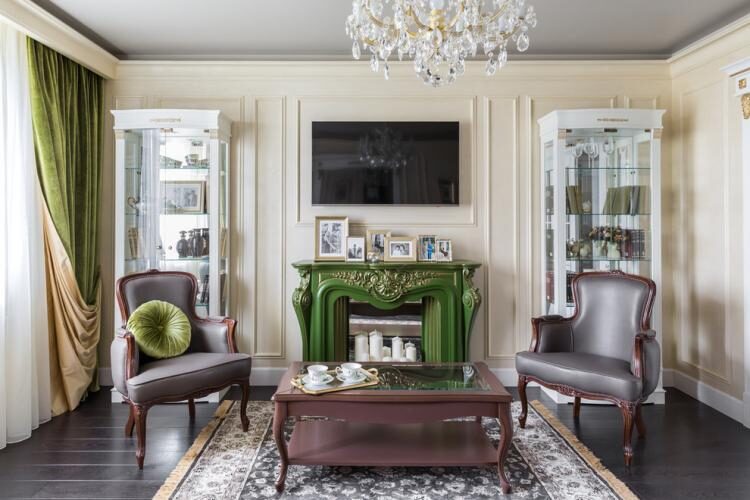
Designing a kitchen in neoclassical style
A neoclassical kitchen looks fresh, stylish, and inspires a working mood. It’s pleasant to cook in, welcome guests, and spend family evenings. To achieve this, consider creating a full-fledged dining area or an island with a bar counter – they naturally fit into the neoclassical interior.
Pay special attention to the choice of materials, as the kitchen is always exposed to moisture, temperature, grease, odors, and food. Artificial stone countertops, sleek wooden cabinetry, and mosaic backsplashes are all great options for a neoclassical kitchen.
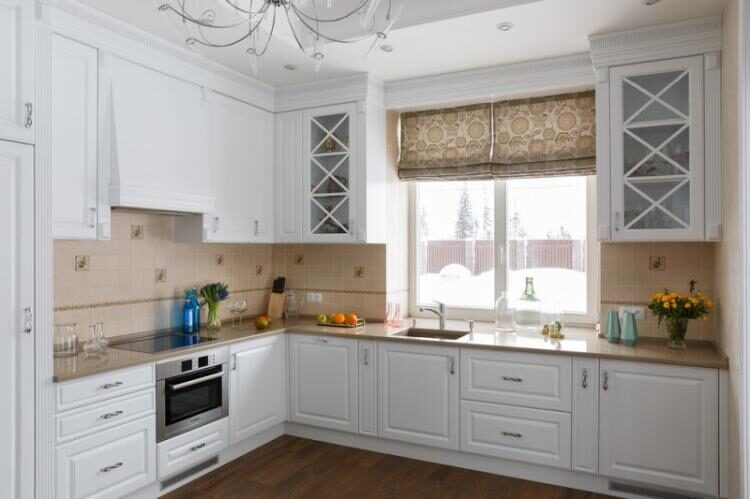
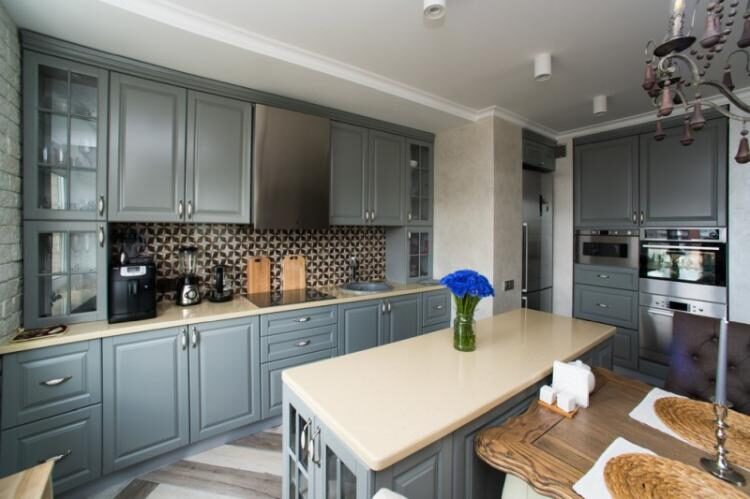
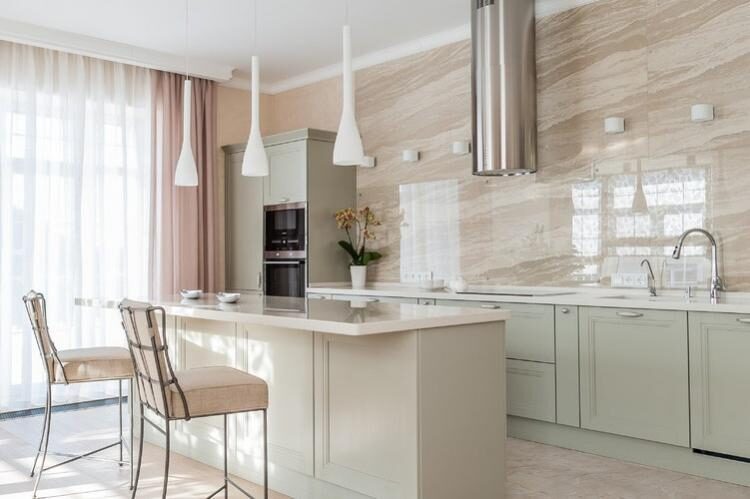
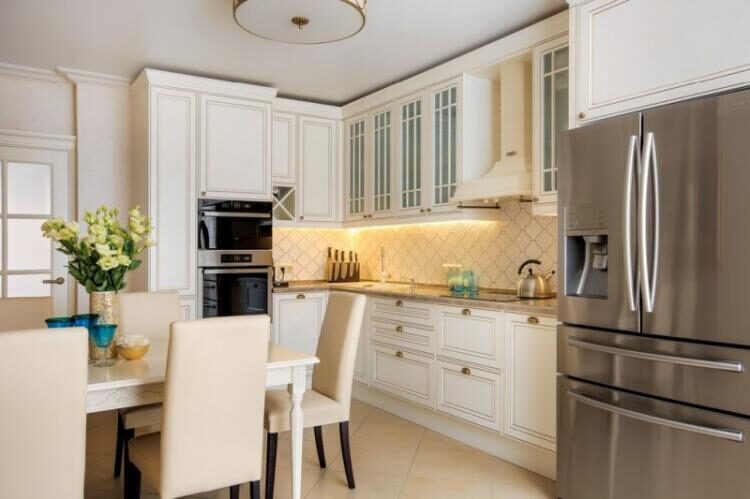
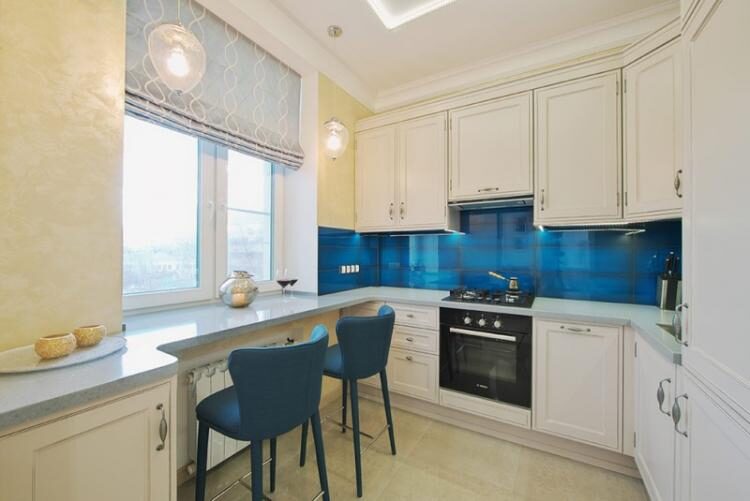
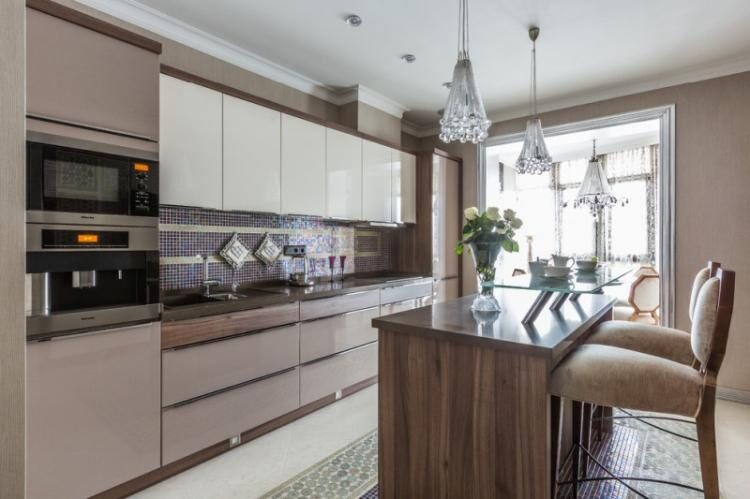
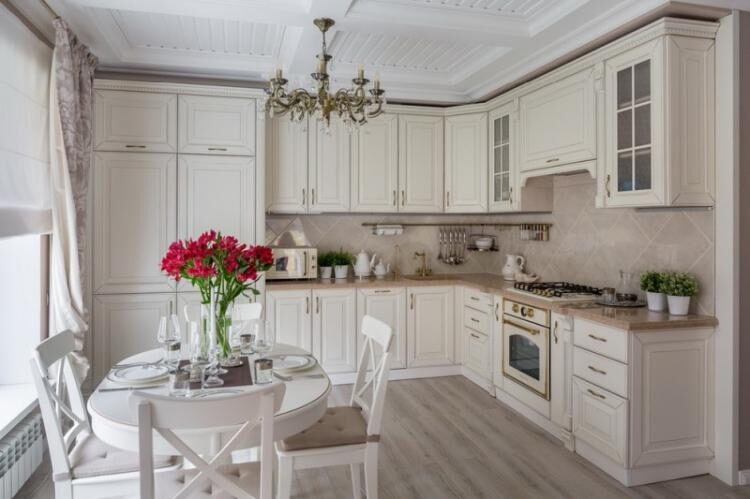

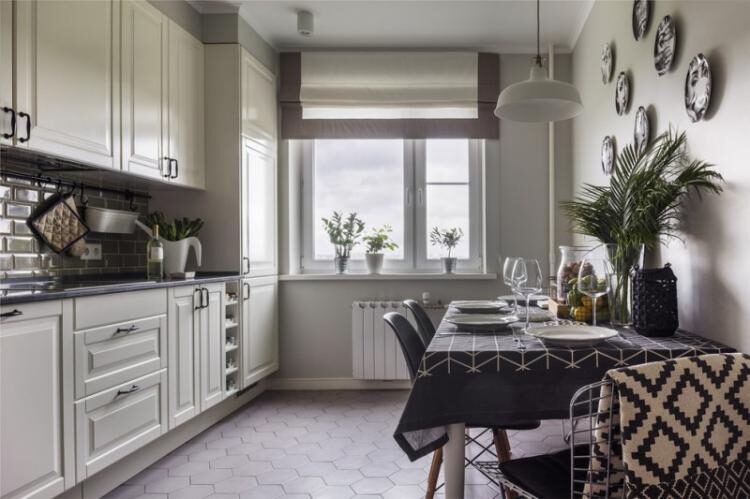
Designing a bedroom in neoclassical style
Neoclassical style is a great fit for decorating light and spacious bedrooms. The centerpiece of the composition is a large and wide elegant bed, framed by matching bedside tables or small tables in the same style.
Replace a bulky wardrobe with a chest of drawers, and if space allows, place an elegant vanity table in the corner. Dark wooden furniture looks stylish and eye-catching against a light pastel or gray finish.
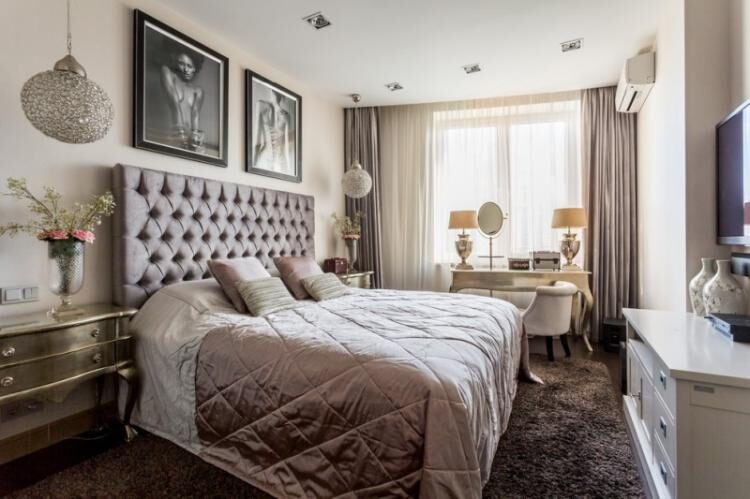
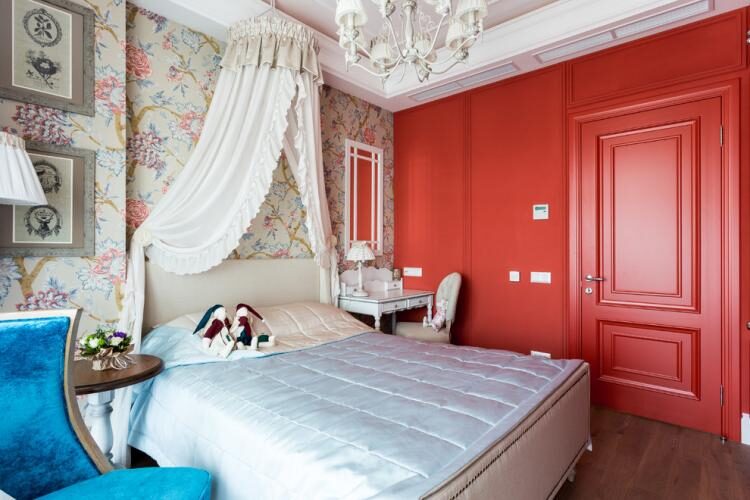

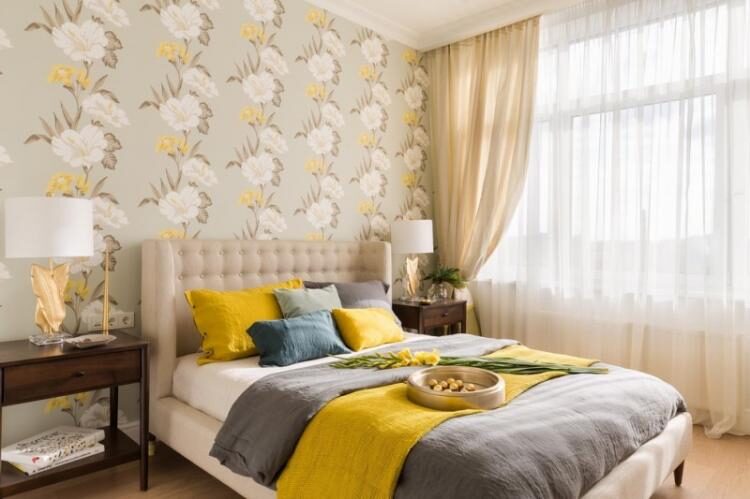
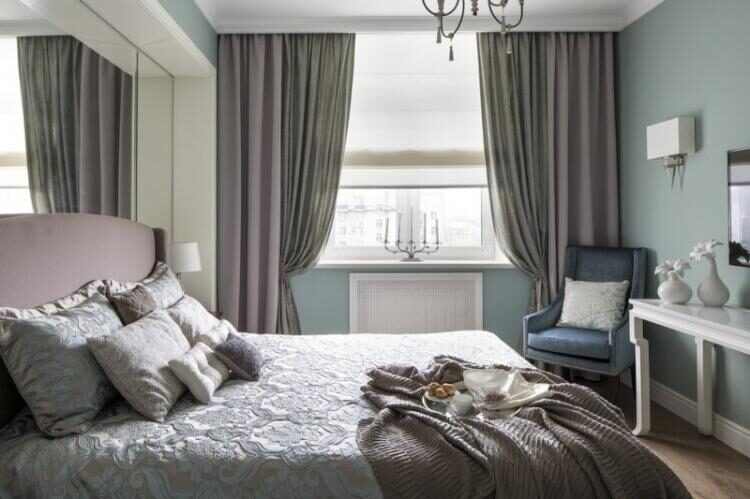
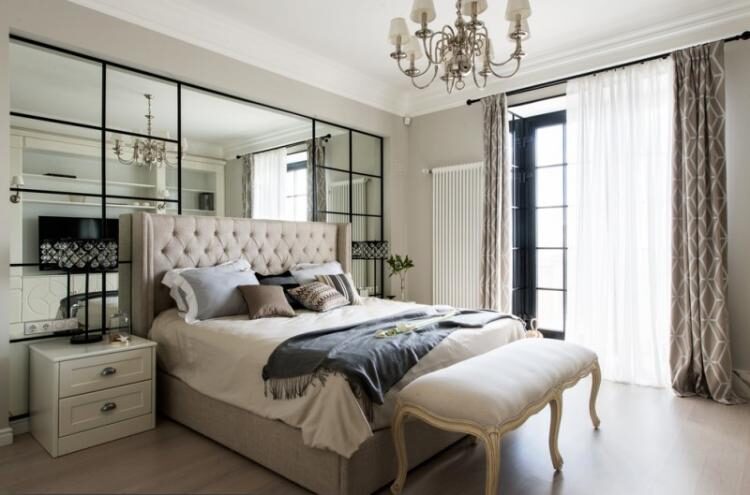
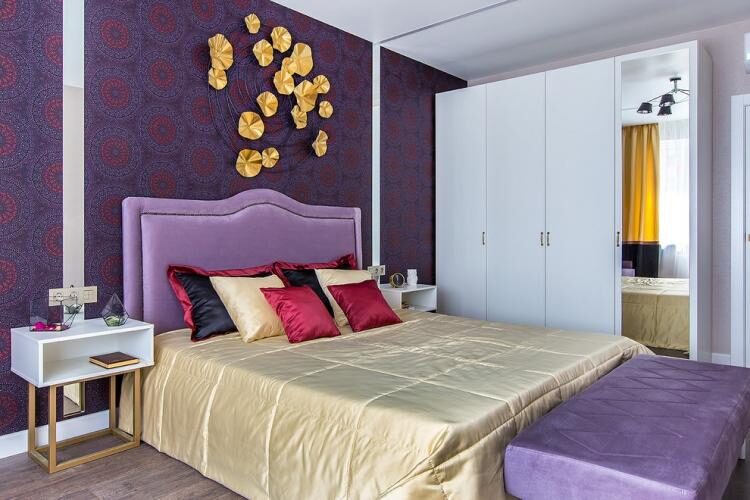
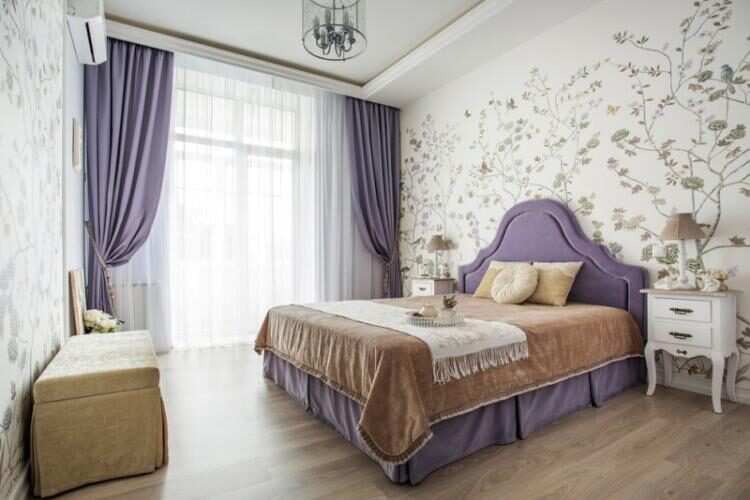

Designing a bathroom in neoclassical style
If you want to recreate a feeling of comfort and luxury in a small bathroom, neoclassical style is the perfect choice. It’s less bulky and overloaded than classical interiors, but it looks just as good.
Use mirrors, mother-of-pearl tiles, intricate ornaments, and a silver or pearly color scheme. A classic bathtub on curved legs and a mirror in a massive decorative frame look great in combination with more concise and minimalist furniture.
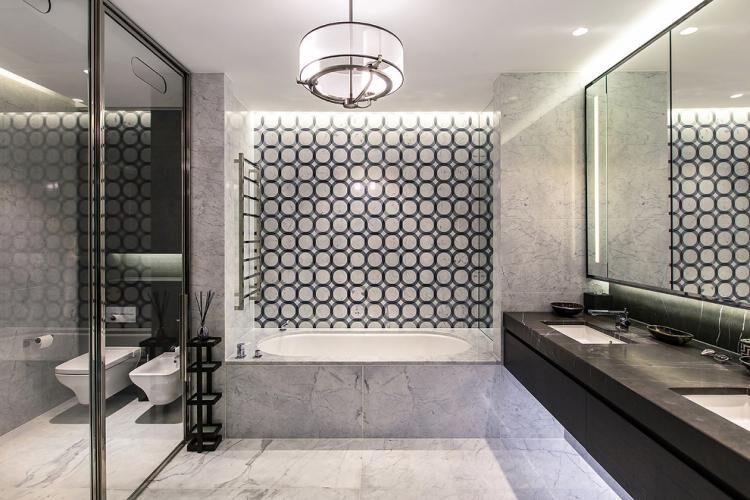
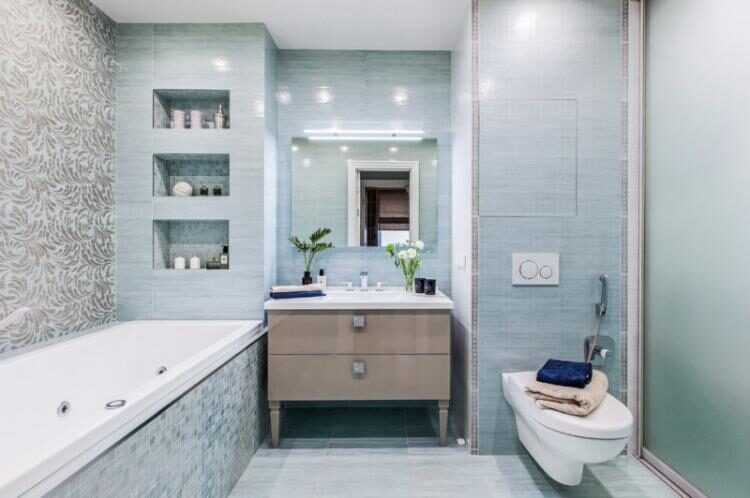
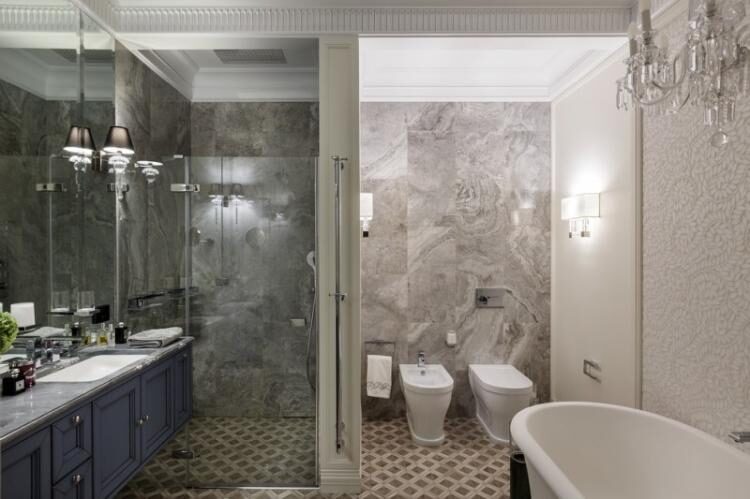
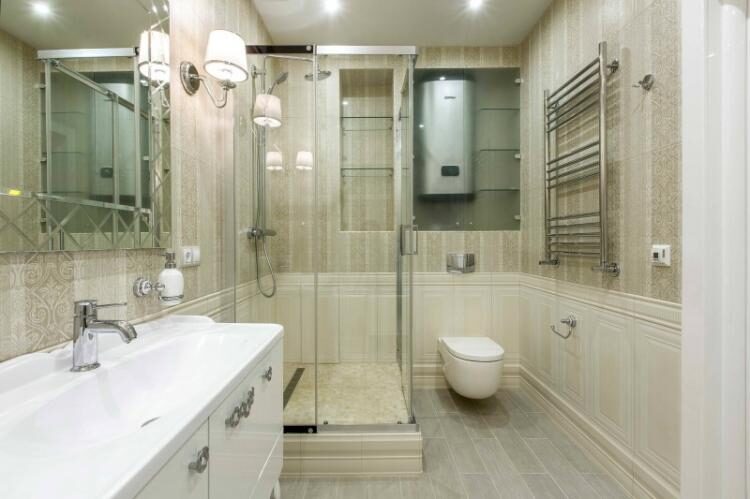
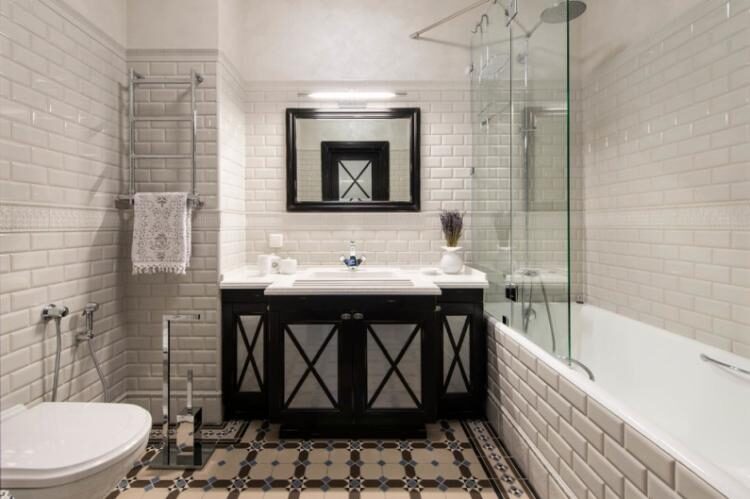
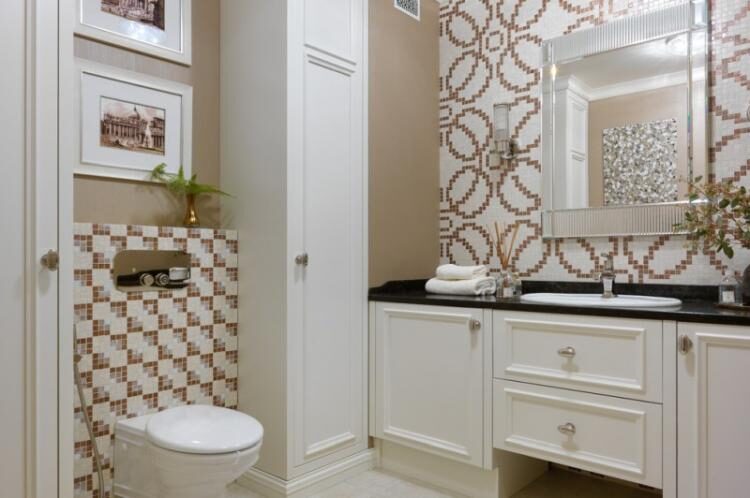
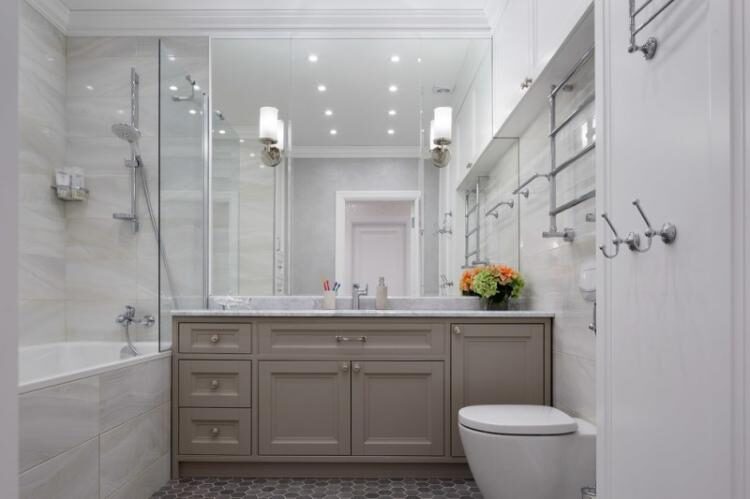
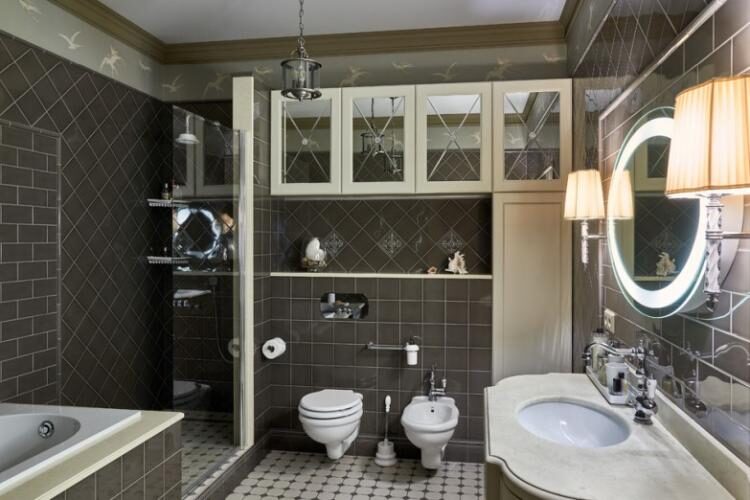
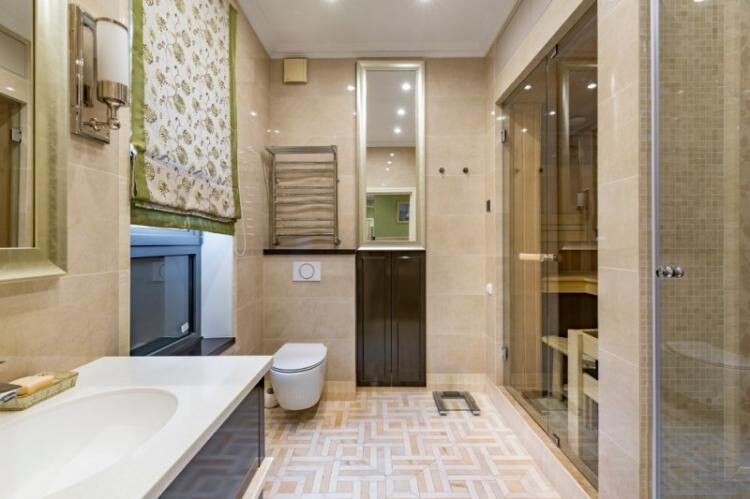
Designing a child’s room in neoclassical style
It may seem like neoclassical style is too strict and complicated for a child’s room, but in reality, its simplicity, restraint, and minimalism make it a calm background for further experimentation.
To fully transform the interior, all you need is decorations, toys, textiles, and other accents. A light neutral neoclassical base can be combined with any of these, so the room can grow together with the child.
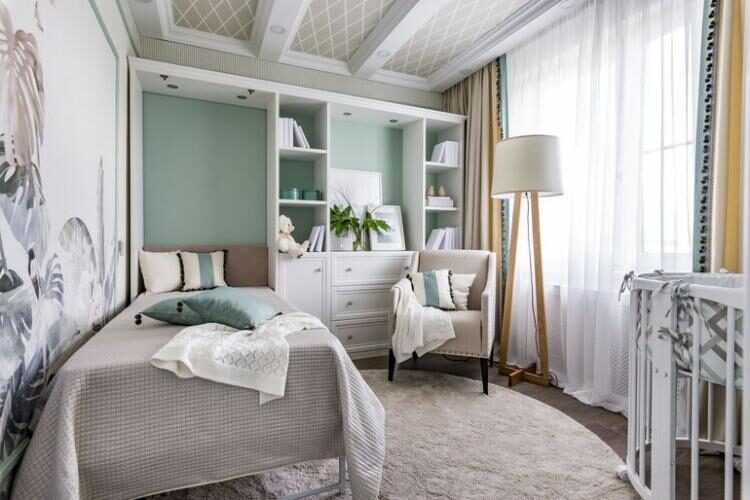
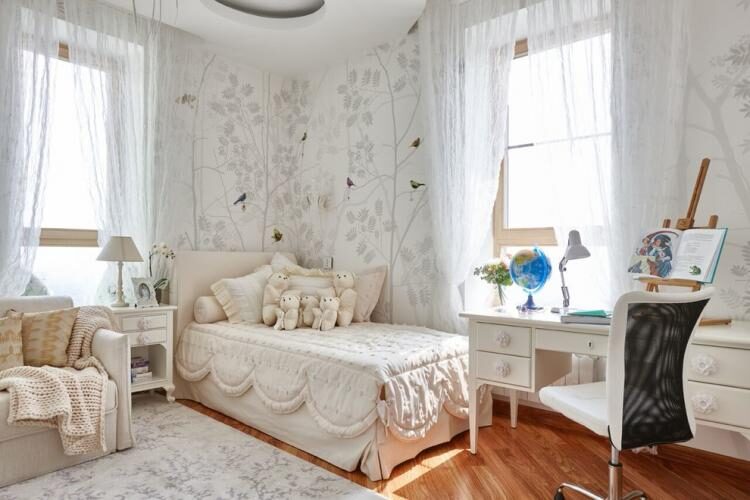
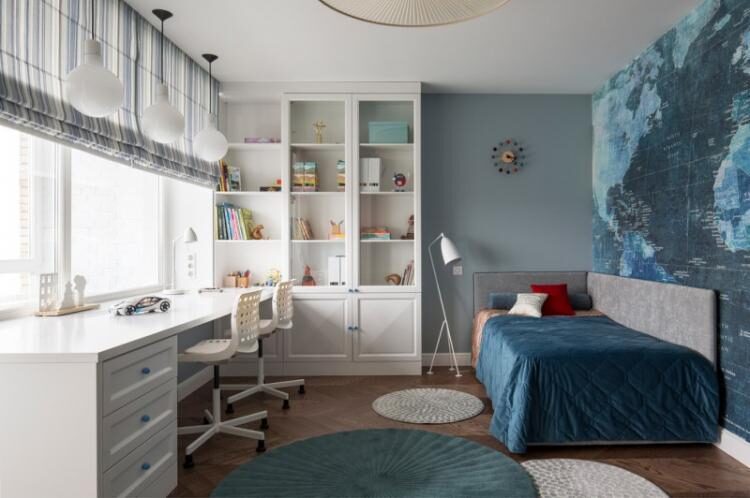
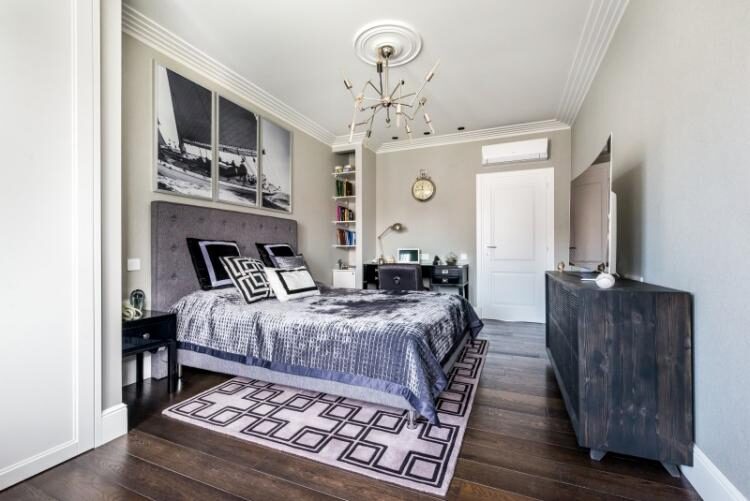
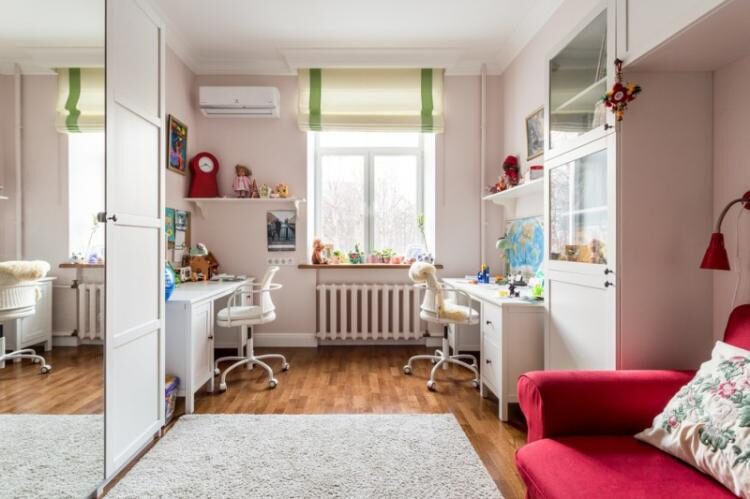
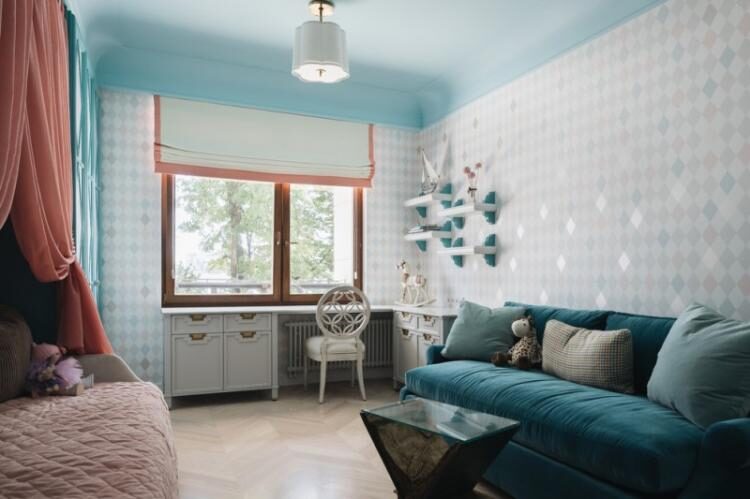
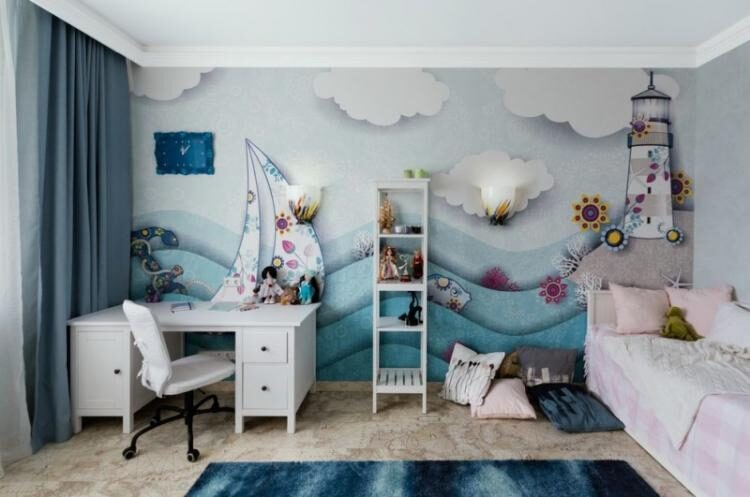
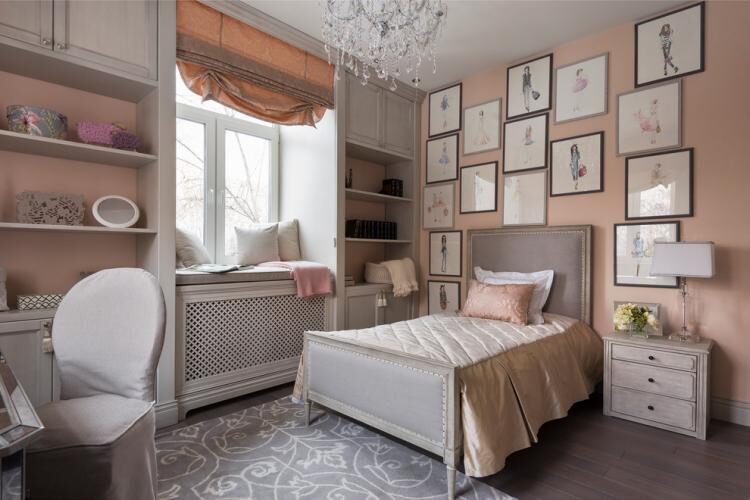
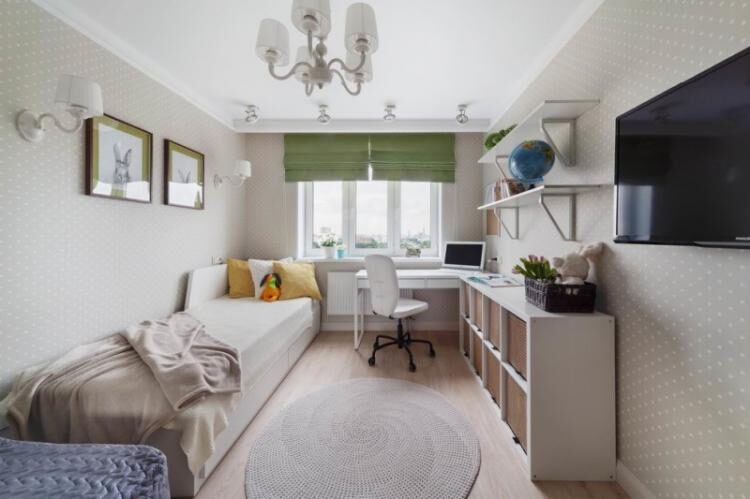
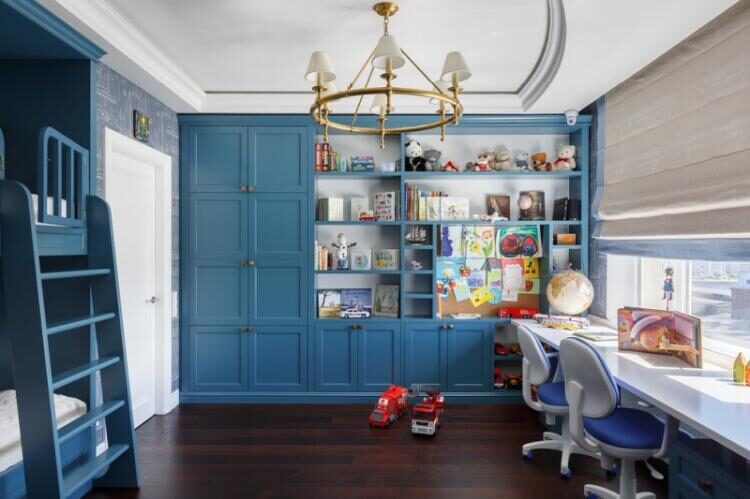
Designing an entryway in neoclassical style.
The entryway is the first impression guests have of your home and sets the tone for the entire house. Designing an entryway can be challenging as it requires fitting in all the necessary items, such as hanging clothes, organizing shoes, and incorporating mirrors. However, a simple and minimalist neoclassical style can make it stylish and tasteful.
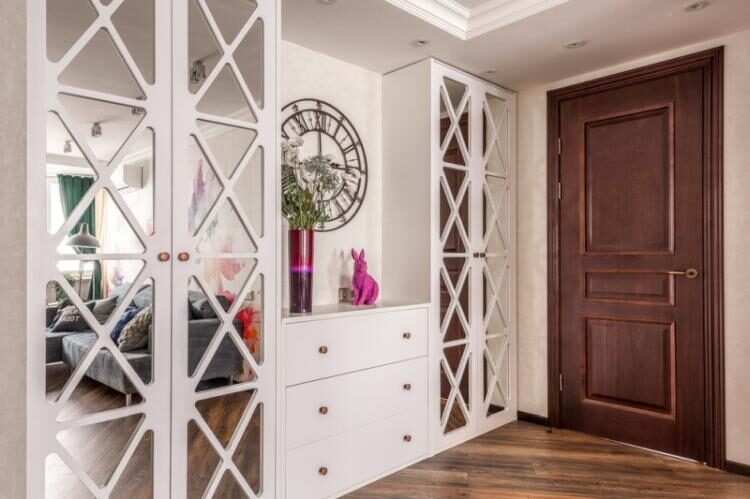
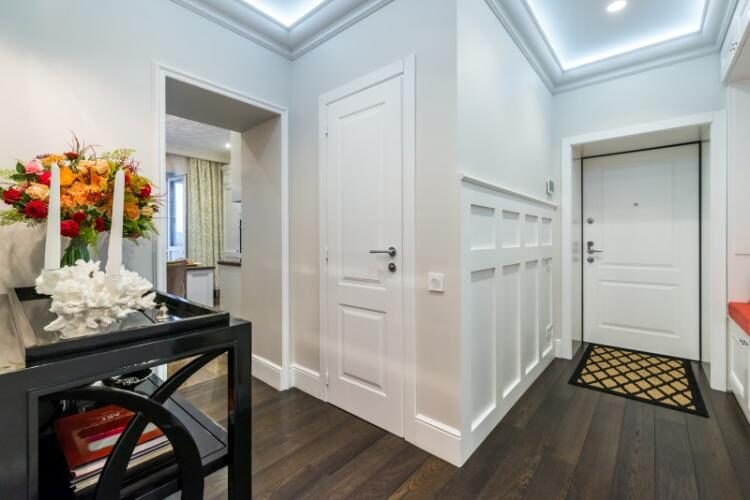
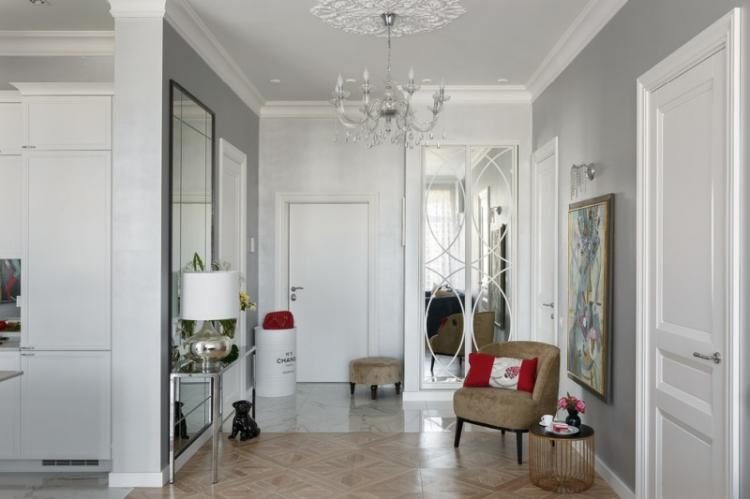
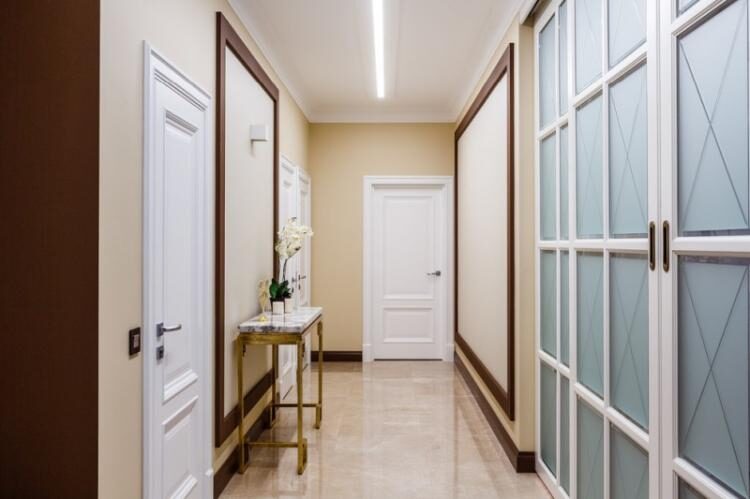
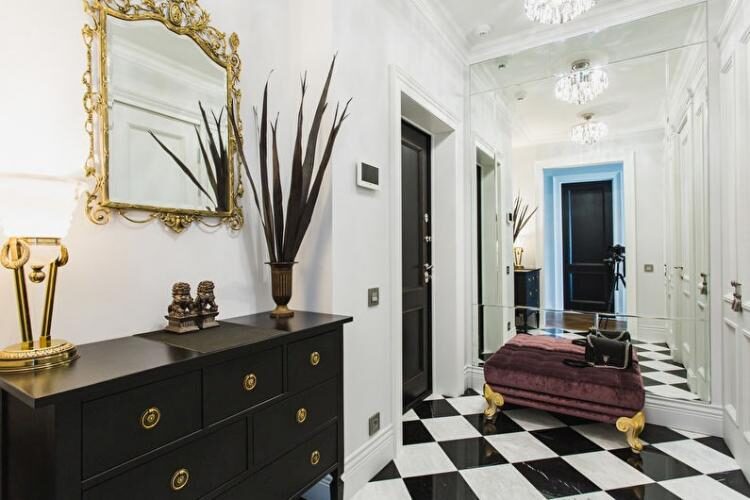
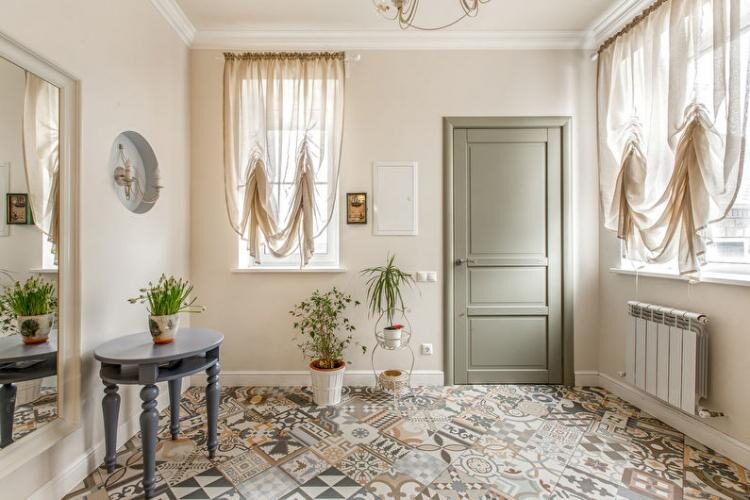
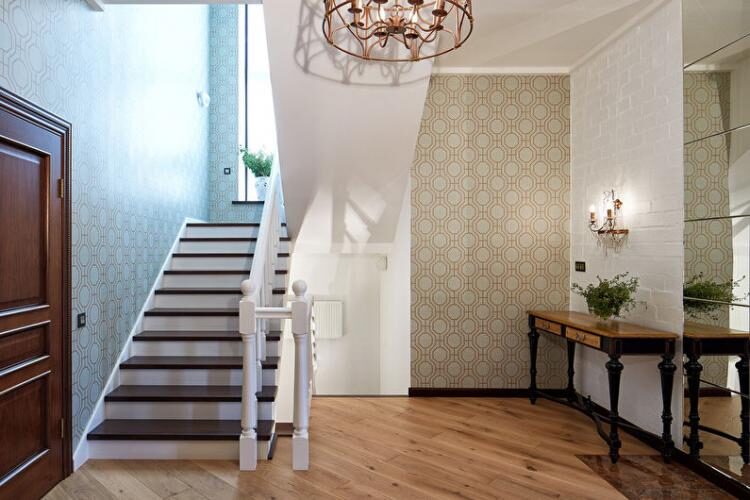
For the finishing, choose durable materials such as washable panels instead of wallpaper, ceramic tiles or porcelain tiles instead of hardwood flooring. Bright lighting and light muted shades of neoclassical style are especially relevant in a dark, small entryway.

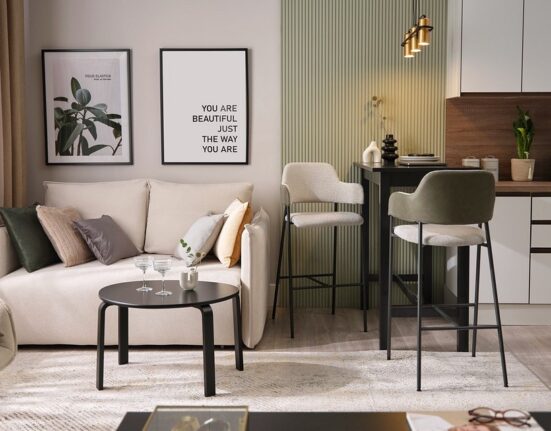
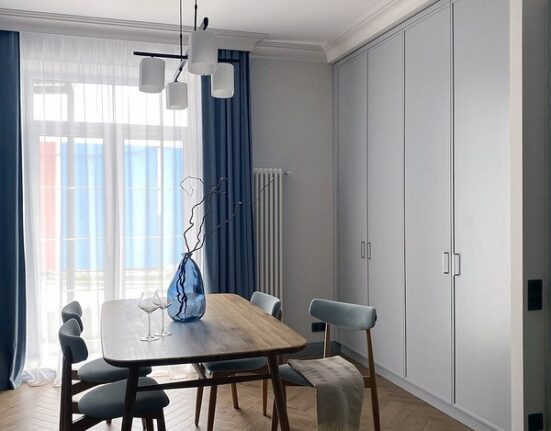

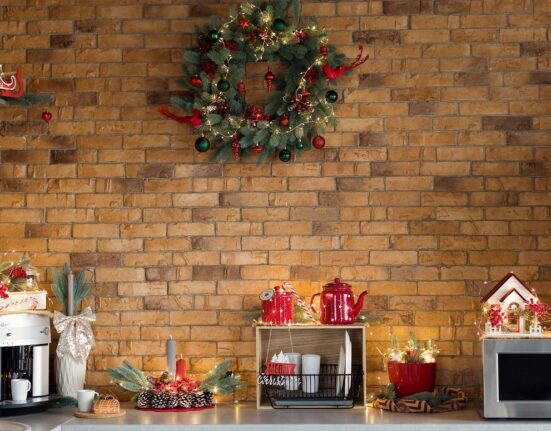

Leave feedback about this